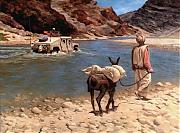Future Coin in Afghanistan
Some of you won’t like this but I will say it anyway. Is this where we are headed with the next Coin/Surge narrative for Afghanistan? This entry by the SWJ editors certainly suggests such undertones. Will we start to see opeds by AEI neo-cons arguing that in 2007 American troops had basically quit the country and hunkered down on Fobs like they did according to the Iraq narrative in 2006? You sit back and say nobody is saying that but I heard from the mouth of a senior officer who was on a senior commander’s staff in Iraq this past year characterize American troops in Iraq in 2006 as “Fob Rats.” And this officer said this so matter-of-factly that it seemed clear to me that that was the garden variety view of things in the halls of the palaces in the GZ and VBC. I thought to myself well if I and my men were “Fob Rats” in 2006 then how in the hell did some soldiers under my command “just get dead?” So why not, let’s just build the same story for Afghanistan. But perhaps this time instead of saying the Americans screwed up we can go easy on ourselves and blame NATO for not “getting it right.” And again the lean toward hagiography in this entry is striking but still without the temporal insights of history to inform.
Why do we have such a positivist view of American military power and its ability to control and shape ANY environment? Clearly, at least to me, that is what underpins the Iraq narrative and is the start of a new narrative for Afghanistan.









Bookmarks